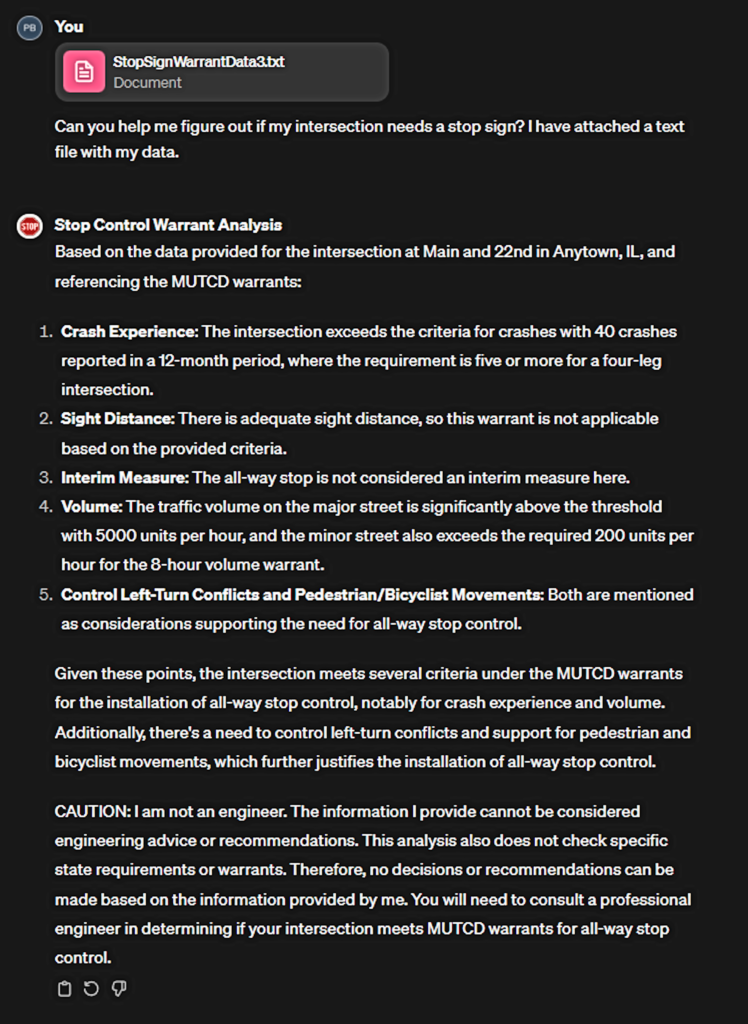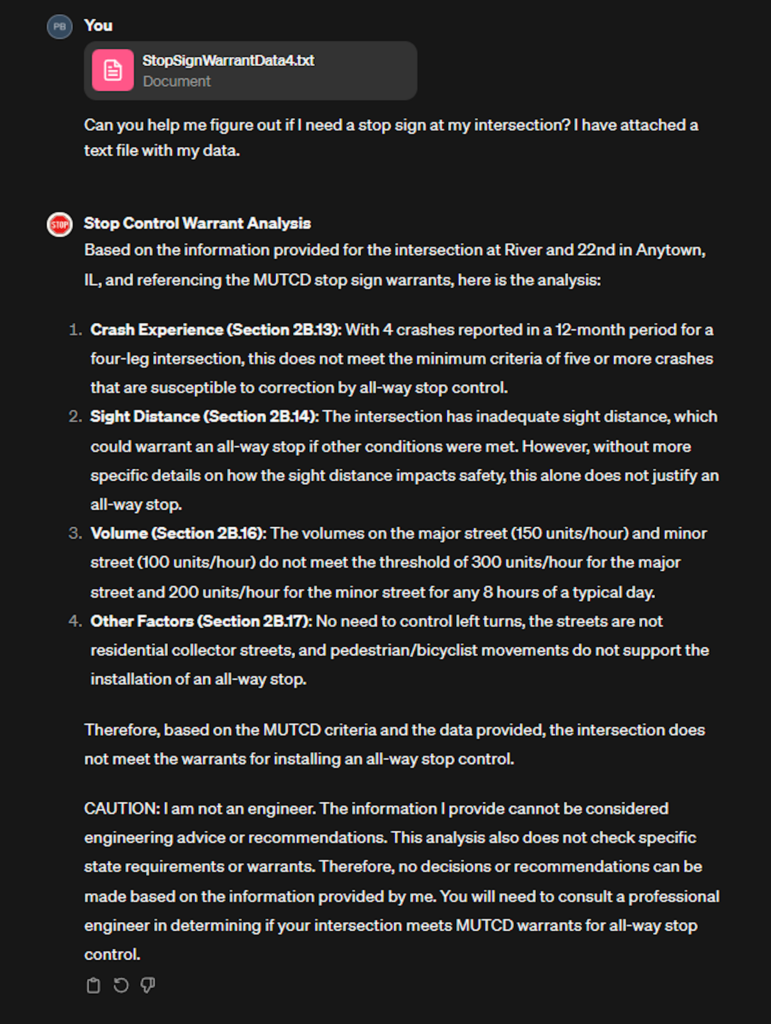
For some time I have been thinking about how AI could be used to assist civil engineers and the public works industry. While I have several ideas, one obvious application I’ve thought about is using it to check all-way stop control signal warrants as defined by the Manual of Uniform Traffic Control Devices (MUTCD). Since I was taking a class in AI with homework asking us to create our own GPTs using ChatGPT, I figured I’d use this opportunity to try out the MUTCD stop warrant idea. While an analysis by AI obviously cannot be used in place of an actual engineer’s analysis, I thought others might be interested in seeing the result of this test of its abilities.
I’ll include below the results so even if you don’t have a subscription to ChatGPT you can see how it performed. If you subscribe to ChatGPT, you can try it on your own at by uploading a txt file with data similar to my example below using the “Stop Control Warrant Analysis” GPT – this is different from using ChatGPT as it is a custom GPT I created specifically to analyze stop control warrants per the MUTCD.
To use it I first prepared a text file with the data I figured the GPT would need to perform the analysis. This is the information I put into a TXT file using Notepad then saved it. By the way, this is all made up information for a fictitious intersection:
Name of Intersection: Main and 22nd
Intersection Location: Anytown, IL
Minor Street Name: 22nd street
Major Street Name: Main street
Number of legs in the intersection: 4
Number of crashes in a 12-month period: 40
There is adequate sight distance.
An all-way stop control could not serve as an interim measure.
The number of units per hour in a typical 8-hour day on the major street is 5000
The number of units per hour in a typical 8-hour day on the minor street in that same hour is 300.
The 85th percentile speed limit is not over 40 mph
There is a need to control left turns
These are not through residential collector streets.
Pedestrian and/or bicyclist movements support the installation of all-way stop control.Next I went to the Stop Control Warrant Analysis GPT and typed in this prompt: “Can you help me figure out if my intersection needs a stop sign? I have attached a text file with my data.” And I uploaded my TXTfile. Below is a screenshot showing this along with the output from the GPT.

I tested it again by starting a new session and uploading a new text file with slightly different data noted below – again all fictitious:
Name of Intersection: River and 22nd
Intersection Location: Anytown, IL
Minor Street Name: 22nd street
Major Street Name: River street
Number of legs in the intersection: 4
Number of crashes in a 12-month period: 4
There is not adequate sight distance.
An all-way stop control could not serve as an interim measure.
The number of units per hour in a typical 8-hour day on the major street is 150
The number of units per hour in a typical 8-hour day on the minor street in that same hour is 100.
The 85th percentile speed limit is not over 40 mph
There is not a need to control left turns
These are not through residential collector streets.
Pedestrian and/or bicyclist movements do not support the installation of all-way stop control.Below is another screenshot showing my prompt and the response:

For each you can see I have asked the GPT to add the language at the end so if anyone tries this they realize it cannot be used in place of an actual analysis by a professional engineer. I only set it up to test out how well it might work with completing this type of analysis and would not want anyone to think it is doing actual engineering – it isn’t. There also might be better ways to use other technologies to do the same thing. However, all of this was done just by telling it what I wanted it to do and giving it the information it needed to do it.
In the future I will continue to test out different applications to see how useful it might or might not be. And if I have anything that looks interesting I’ll continue to share here. If anyone else has tried creating something for engineering or public works, I’d also be very interested in exploring it.


